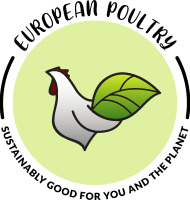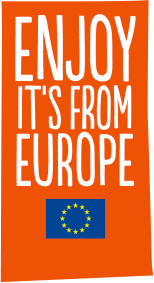What do our animals eat?
Feed in the European sustainable poultry sector
Ever wondered what the composition of modern feed formula for poultry is in the EU? Although the majority of feed is composed of wheat, the ingredients included in feed are various and necessary to keep a healthy diet for our animals.
Keep reading to learn more about this topic![1]
As part of social sustainability, feed and its composition in the European poultry sector are essential factors to take care of. Wheat, soybean, rapeseed and fishmeal, a formula ensured without the use of antibiotics, this is the general composition of the common broiler feed in Europe.
Regarding feed composition and its use in Europe, there is a greater level of variability in aspects like operation size, ingredient availability or nutritional knowledge, all among the different member states and European nutritionists.
However, in general terms, wheat is the main cereal found in feed composition in Europe. It is not the only cereal that is included in feed, as corn is also added either from local origin or imported. Wheat has more protein and phosphorus.
The use of fishmeal as ingredient provides excellent nutritional results when the origin is a product of the best quality. It is the case of herring meal as a source of 70% crude protein. However, due to higher costs, this ingredient can be replaced by vegetable proteins.
In terms of protein, soybean meal remains the major ingredient providing the protein source. However, as the EU is seeking to reduce dependency on this ingredient, alternatives like the fast development of rapeseed cultivation (about 35% crude protein) are becoming a relatively more affordable and available ingredient.
Finally, other ingredients would include agents like coccidiostats. And what are these? According to Science Direct: coccidiostats are antiprotozoal agents that act on coccidia parasites by inhibiting reproduction and retarding the development of the parasite in a host cell. They are most commonly used in poultry populations by addition in the feed at the authorized levels and observing the prescribed hygiene requirements.
These agents are not considered as antibiotics, as they are allowed for use, unlike other components like bacterial antibiotics that have been banned completely for growth promoting usage in the EU.
In general terms, the ingredient proportions in 1000 pounds of modern feed formula for poultry would be as follows:
Source: Ioannis Mavromichalis, Ph.D.
European Poultry sector takes good care of the quality and composition of the feed given to our animals, providing with all necessary nutrients and complying with the highest standards set by the European Union. That approach is just a part of the social sustainability pillar, to which the sector is committed.
Promotion programme to inform about the Sustainable European Poultry Sector
SUST EU POULTRY is a two-year promotion campaign supported by the European Commission and launched by three national poultry associations and their European umbrella association (from Germany, France and Spain) with the main goal of raising awareness among European consumers and professionals about the sustainability of the European poultry sector and a product of great quality.
————————————————————————————————-
Additional information
PRESS CONTACT Ana María Martín ATLAS MARKETING STUDIO
internacional@atlasmarketingstudio.com | CONTACT AVEC Federica Chiarella AVEC SECRETARIAT
sust@eu-poultry.eu |
The content of the present advertising solely represents the opinion of the author and is the exclusive responsibility of the same.
The European Commission assumes no responsibility for the use that may be made of the information contained therein.
[1] Source: Modern European broiler feed formulations – FeedStrategy







